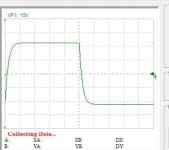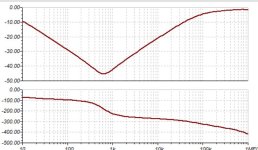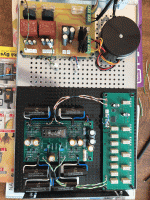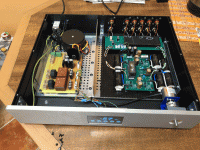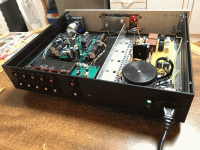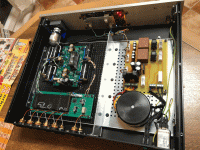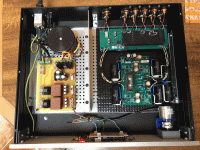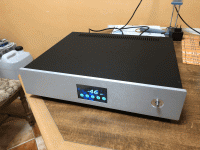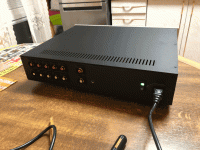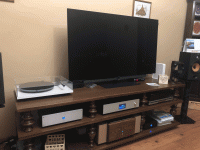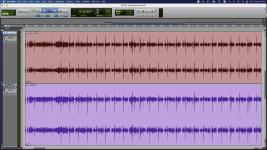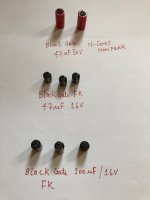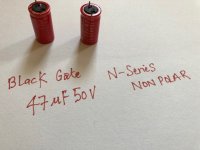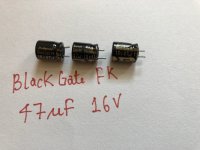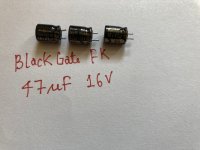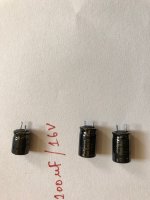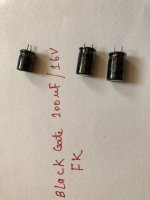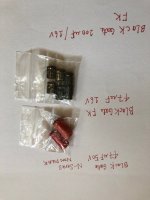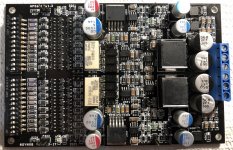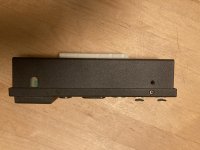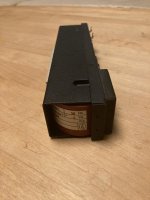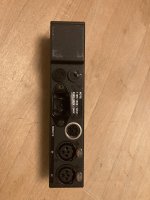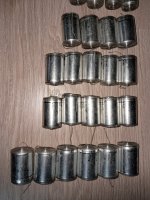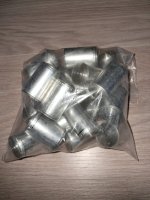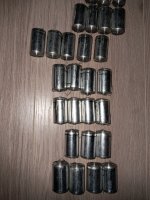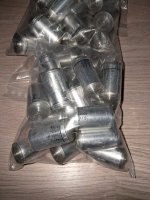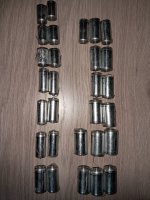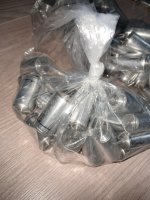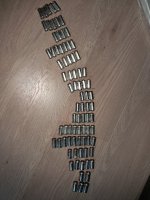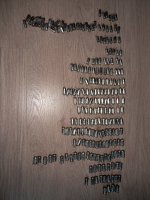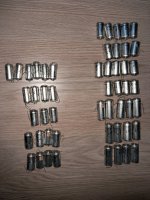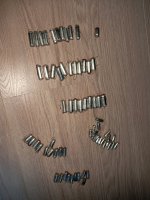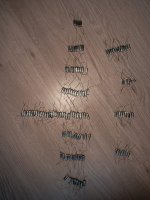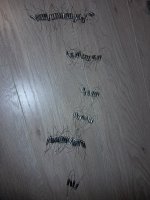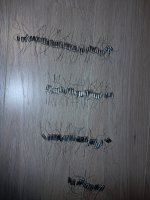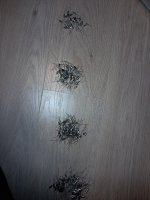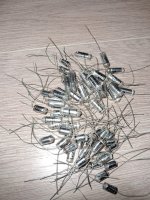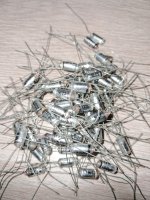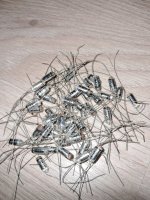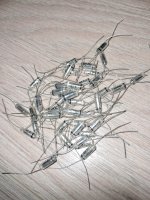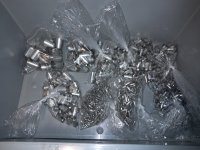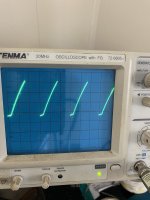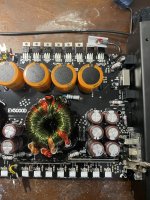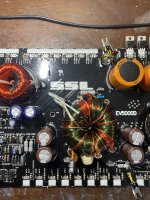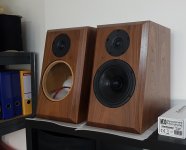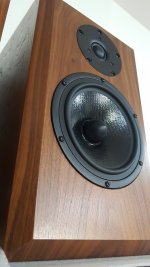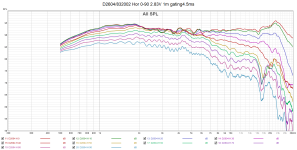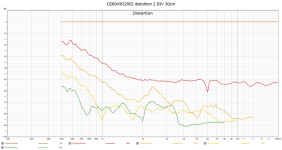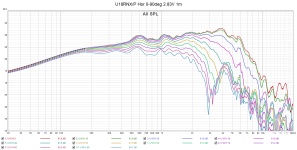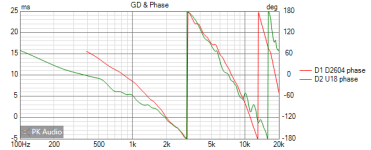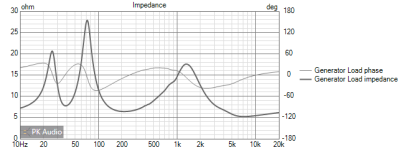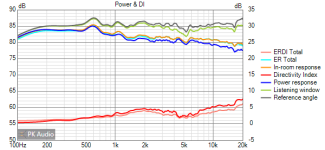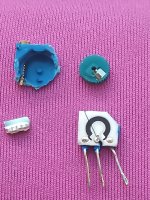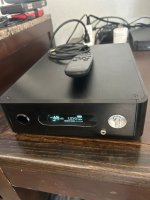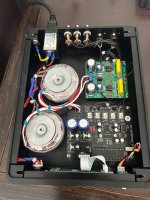Error Corrected Chip Amplifiers, aka Modulus Clone
- Chip Amps
- 115 Replies
This circuit is a natural variant of subtracting error correction but included in the feedback. Instead of subtracting the error, it divides it by NFB.
https://www.diyaudio.com/community/threads/subtracting-error-correction.408153/post-7578125
An error correcting amp feedback only the error found by the difference of the input and the weighted output. The advantage over the composite type, the power chip receives directly the input signal without extra layer and the opamp functions at very low levels which doesn't require super low distortion opamp.
I should rather say wide band error amp instead of opamp because it must amplify the error without integrating it. The difference the error amp sees, is the same what the power amp sees, as the power chips are integrators in open loop, if the error amp also integrates the same input, it will become back an image of the output signal. To keep at high gain all the audio band, it needs 2 pole compensation for stability.
This type of amps have two independent stability character, the error feedback loop and the error correction frequency. If higher frequencies than the power chip are asked to get corrected, the chip amp will decrease its phase margin, this why the error amp receives the input via a low pass filter.

I use the AD829 wide band opamp which can have its gain bandwith adjusted. This amp doesn't need servo as the error receives the DC component of the output without attenuation. The slight offset can be adjusted by the opamp offset adjust, not implemented on the model, so I adjusted by R7.
The LM3886 has OLG@20khz of 50db. With 26db CLG, only 24db NFB is left. With this error corrector 80-100db is possible.
The origin of Modulus86 from Mr Evil posted in 13 11 2004.
Thread 'Unnamed feedback method explored.' https://www.diyaudio.com/community/threads/unnamed-feedback-method-explored.45662/
https://www.diyaudio.com/community/threads/subtracting-error-correction.408153/post-7578125
An error correcting amp feedback only the error found by the difference of the input and the weighted output. The advantage over the composite type, the power chip receives directly the input signal without extra layer and the opamp functions at very low levels which doesn't require super low distortion opamp.
I should rather say wide band error amp instead of opamp because it must amplify the error without integrating it. The difference the error amp sees, is the same what the power amp sees, as the power chips are integrators in open loop, if the error amp also integrates the same input, it will become back an image of the output signal. To keep at high gain all the audio band, it needs 2 pole compensation for stability.
This type of amps have two independent stability character, the error feedback loop and the error correction frequency. If higher frequencies than the power chip are asked to get corrected, the chip amp will decrease its phase margin, this why the error amp receives the input via a low pass filter.
I use the AD829 wide band opamp which can have its gain bandwith adjusted. This amp doesn't need servo as the error receives the DC component of the output without attenuation. The slight offset can be adjusted by the opamp offset adjust, not implemented on the model, so I adjusted by R7.
The LM3886 has OLG@20khz of 50db. With 26db CLG, only 24db NFB is left. With this error corrector 80-100db is possible.
The origin of Modulus86 from Mr Evil posted in 13 11 2004.
Thread 'Unnamed feedback method explored.' https://www.diyaudio.com/community/threads/unnamed-feedback-method-explored.45662/
